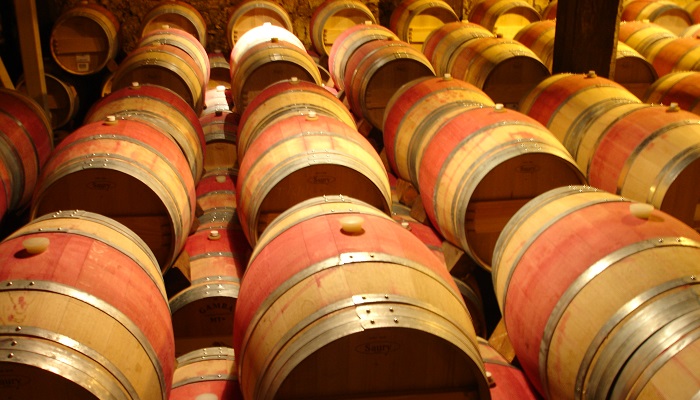

Tasting wine is a completely different activity from drinking wine itself. That’s why, you can often see and wonder why some people move their glass of wine in a gentle circular motion in their hands, take a sip and contemplate the taste of it for a long time. To taste wine like a professional connoisseur you should "slow down the pace of taking a sip" and pay more attention to some of the sensory feelings such as taste, smell, touch and vision. Remember something important – in wine tasting there are no specific rules on how wine should smell or have a certain taste. Each batch, variety and production method is different.
Rules for wine tasting:
Turn the glass around in a gentle circular motion so that the wine would pour over the walls of the glass a little and bend it to 45 degrees over a white cloth or paper in order to identify the color of the wine. In assessing the color of the wine bear in mind the following: the degrees of clarity that wine can have are - perfectly clear with gloss, clear, opalescent (from the gemstone opal. Amongst wines in this column there is a color texture and reflection of light), cloudy and cloudy with some sediment. Signs such as mist, surface stains and low transparency talk about wine with poor quality condition. The sediment, on the other hand, is not always a sign of poor quality. For wines the aging process does not end with their stay in the barrels. After bottling, in the absence of oxygen begins the final stage of aging - then tannins and anthocyaninеs (the colorants) combine and this causes the development of both color and flavor. Due to the progress of these processes it is normal for old wines to leave sediments, even if they have been filtered before bottling. In this case the sediment indicates the age of the wine. Its presence in young wines, however, is considered as a defect. The consistence of red wines is significantly richer because of which they have greater abundance and complexity in the nuances. When they are young, red wines are characterized by bright crimson-red colors and light purple nuances. Over time and under the influence of the barrels, the anthocyanines (the colorants ) go through various chemical processes and the color of the wine slowly changes. Wines with prevailing ruby, cherry and purple shades are in the optimal phase of their development. In mature wines the emergence of dark red and orange shades is an indicator of advanced oxidation processes.
Place the cup under your nose and inhale deeply so as to feel and determine the specific scent of the wine. Take your time, you can do it several times. With the word "nose" connoisseurs and enthusiasts summarize the aromatic sensations that they have experienced from a particular wine. The evaluation of these features is being done in a relaxed atmosphere, with a suitable cup and prepared smell. Preferably, in the room where you are, there should not be any predominant strong odors that could upset your senses. The temperature is also important. At inappropriate levels, it may as well "lock" the fragrance of the wine and dull your sense of smell and you may miss some of the more subtle smells. Connoisseurs divide "the nose" into two separate groups - aroma and bouquet. The aroma includes fragrances directly linked with the organic chemical compounds of the grapes’ skin.
When you have finished with the evaluation of the "dress" and "nose" of the wine, next in order comes its taste. Sip around 8ml of the liquid and without swallowing, pour some of that quantity several times evenly over all taste zones of your tongue and palate. Thus, you could create an initial impression of the taste. Then take a minimal amount of air through your teeth and nose. In this way you will unlock more of the characteristics of the wine and will reveal the possible existence of faults and defects.
According to the requirements of etiquette and protocol, it is recommended that, when you taste in a large company, you do the same as the others at the same time - when they sip, you sip, when others watch the color of the wine, respectively, you do the same.
Keep up to the etiquette and do not criticize how others assess wine and what specific taste sensations they find in it. Wine tasting is subjective - there is no right or wrong.
If you want an extra drink, it should be only water. Do not take coffee, sodas and juices that will affect your sensations and will change the real flavors of the wine in your mouth.